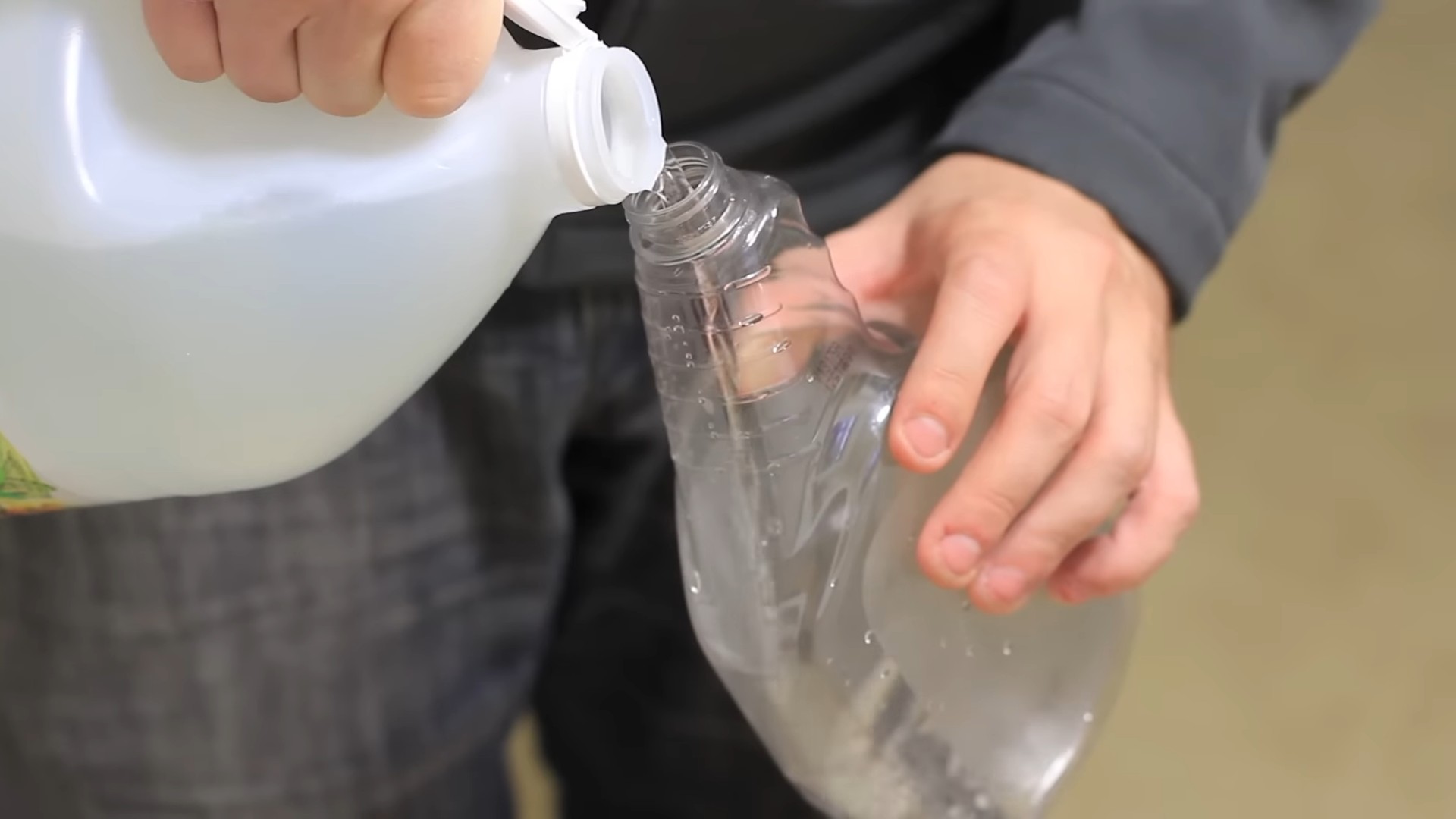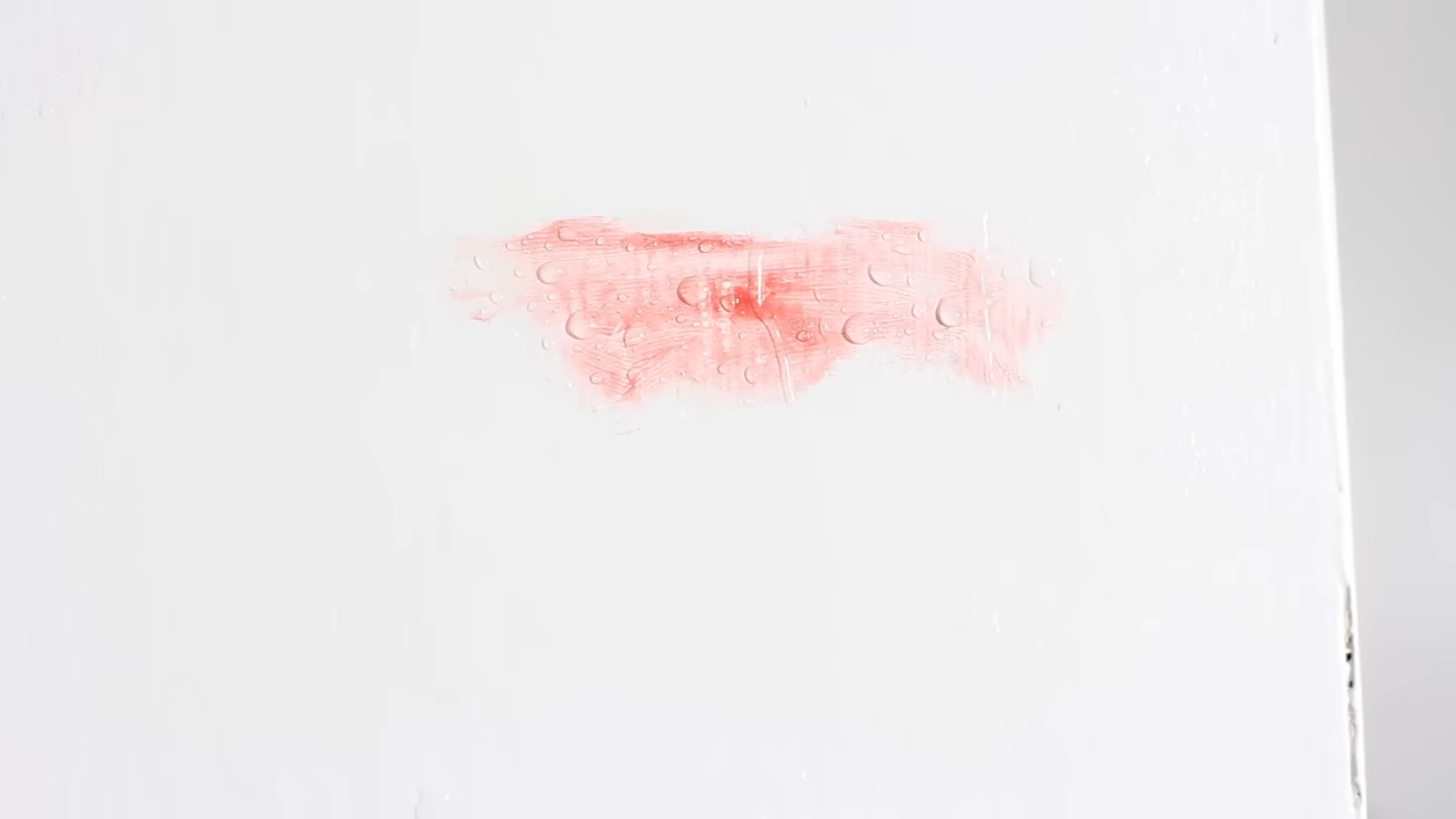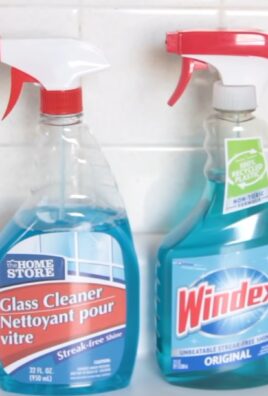Vinegar cleaning hacks are about to revolutionize your cleaning routine! Are you tired of spending a fortune on harsh chemicals that promise sparkling results but often leave behind lingering odors and potential health hazards? I know I was! For generations, vinegar has been a trusted household staple, used for everything from pickling vegetables to soothing sore throats. Its cleaning prowess, however, is often underestimated.
From ancient civilizations using fermented fruits for cleaning to our grandmothers relying on vinegar for laundry and disinfecting, this humble liquid has a rich history. But in today’s world, where we’re increasingly conscious of the environment and the impact of our choices, vinegar cleaning hacks are more relevant than ever.
This DIY guide will unlock the secrets of using vinegar to tackle grime, eliminate odors, and achieve a spotless home without breaking the bank or harming the planet. I’ll share my favorite vinegar cleaning hacks, from descaling your coffee maker to banishing mildew in your bathroom. Get ready to ditch the toxic chemicals and embrace the power of this natural, effective, and surprisingly versatile cleaning agent!

Unlocking the Power of Vinegar: Your Ultimate DIY Cleaning Guide
Hey there, fellow DIY enthusiasts! I’m super excited to share some of my favorite vinegar cleaning hacks with you. Vinegar is a true powerhouse when it comes to natural cleaning. It’s cheap, readily available, and incredibly effective against all sorts of grime and gunk. Forget those harsh chemicals – let’s harness the cleaning magic of vinegar!
Why Vinegar?
Before we dive into the hacks, let’s quickly touch on why vinegar is such a fantastic cleaning agent. The secret lies in its acidity. Acetic acid, the main component of vinegar, is a natural disinfectant and deodorizer. It can dissolve mineral deposits, cut through grease, and even kill some bacteria and mold. Plus, it’s non-toxic and safe for your family and pets (when used properly, of course!).
General Safety Tips
* Always dilute vinegar with water. Undiluted vinegar can be too harsh for some surfaces. A 1:1 ratio of vinegar to water is usually a good starting point.
* Never mix vinegar with bleach. This combination creates toxic chlorine gas, which is extremely dangerous.
* Test on an inconspicuous area first. Before cleaning an entire surface, test the vinegar solution on a small, hidden spot to ensure it doesn’t cause any damage or discoloration.
* Ventilate the area. Vinegar has a strong odor, so open windows or turn on a fan to ensure proper ventilation.
* Wear gloves. If you have sensitive skin, wearing gloves can prevent irritation.
Hack 1: Sparkling Clean Windows and Mirrors
Tired of streaks on your windows and mirrors? Vinegar is your answer! This is one of my go-to cleaning methods.
What you’ll need:
* Spray bottle
* White vinegar
* Water
* Microfiber cloth or newspaper
Step-by-step instructions:
1. Prepare the cleaning solution: In the spray bottle, mix equal parts white vinegar and water. I usually go for a 1:1 ratio, but you can adjust it based on how dirty your windows are.
2. Spray the surface: Lightly spray the vinegar solution onto the window or mirror. Don’t over-saturate it.
3. Wipe clean: Use a clean microfiber cloth or crumpled newspaper to wipe the surface dry. Newspaper might sound weird, but trust me, it works wonders for streak-free shine! Wipe in overlapping strokes, and replace the cloth or newspaper as needed.
4. Admire your sparkling clean windows! Seriously, the difference is amazing.
Hack 2: Deodorizing Your Microwave
Microwaves can get pretty gross, pretty fast. Food splatters, lingering odors – it’s not a pretty sight. Luckily, vinegar can help!
What you’ll need:
* Microwave-safe bowl
* White vinegar
* Water
Step-by-step instructions:
1. Prepare the vinegar solution: Fill the microwave-safe bowl with 1 cup of water and 1/4 cup of white vinegar.
2. Microwave the solution: Place the bowl in the microwave and heat it on high for 3-5 minutes, or until the solution is boiling and the microwave is filled with steam.
3. Let it sit: Leave the microwave door closed for another 5-10 minutes to allow the steam to loosen any stuck-on food particles.
4. Wipe clean: Carefully remove the bowl (it will be hot!) and wipe down the inside of the microwave with a clean cloth or sponge. The grime should come off easily.
5. Enjoy a fresh-smelling microwave! This method not only cleans but also deodorizes, leaving your microwave smelling fresh and clean.
Hack 3: Cleaning Your Coffee Maker
Coffee makers can accumulate mineral deposits over time, which can affect the taste of your coffee. Vinegar to the rescue!
What you’ll need:
* White vinegar
* Water
* Coffee maker
Step-by-step instructions:
1. Prepare the cleaning solution: Fill the water reservoir of your coffee maker with equal parts white vinegar and water.
2. Run a brewing cycle: Turn on your coffee maker and let it run through a full brewing cycle.
3. Rinse with water: After the vinegar solution has run through, fill the reservoir with fresh water and run another one or two brewing cycles to rinse away any remaining vinegar.
4. Enjoy better-tasting coffee! This simple cleaning process will remove mineral buildup and improve the taste of your coffee.
Hack 4: Removing Hard Water Stains
Hard water stains can be a real pain, especially in bathrooms and kitchens. Vinegar is a great natural solution for tackling these stubborn stains.
What you’ll need:
* Spray bottle or cloth
* White vinegar
* Water (optional, for dilution)
* Scrub brush or sponge
Step-by-step instructions:
1. Prepare the vinegar solution: For light stains, dilute the vinegar with water (1:1 ratio). For tougher stains, you can use undiluted vinegar.
2. Apply the solution: Spray the vinegar solution onto the affected area or apply it with a cloth.
3. Let it sit: Allow the vinegar to sit on the stains for 15-30 minutes to allow it to break down the mineral deposits.
4. Scrub and rinse: Use a scrub brush or sponge to scrub away the stains. Rinse thoroughly with water.
5. Repeat if necessary: For particularly stubborn stains, you may need to repeat the process.
Hack 5: Cleaning Your Showerhead
Showerheads can get clogged with mineral deposits, reducing water pressure and affecting your shower experience. Vinegar can help restore your showerhead to its former glory.
What you’ll need:
* Plastic bag
* White vinegar
* Rubber band or twist tie
Step-by-step instructions:
1. Fill the bag with vinegar: Pour enough white vinegar into the plastic bag to completely submerge the showerhead.
2. Secure the bag: Attach the bag to the showerhead using a rubber band or twist tie, ensuring that the showerhead is fully immersed in the vinegar.
3. Let it soak: Allow the showerhead to soak in the vinegar for at least 30 minutes, or preferably overnight.
4. Remove the bag and rinse: Remove the bag and run the shower for a few minutes to flush out any remaining vinegar and loosened mineral deposits.
5. Enjoy a revitalized shower! You should notice an immediate improvement in water pressure.
Hack 6: Freshening Up Your Laundry
Vinegar can be a great addition to your laundry routine. It can help brighten clothes, remove odors, and even soften fabrics.
What you’ll need:
* White vinegar
* Washing machine
Step-by-step instructions:
1. Add vinegar to the wash: Add 1/2 cup of white vinegar to your washing machine during the rinse cycle.
2. Let the machine run: Allow the washing machine to complete the rinse cycle as usual.
3. Enjoy fresher, brighter laundry! Vinegar helps to remove detergent residue, brighten colors, and eliminate odors. It also acts as a natural fabric softener.
Hack 7: Cleaning Your Dishwasher
Just like coffee makers, dishwashers can also accumulate mineral deposits and food residue. Vinegar can help keep your dishwasher clean and running efficiently.
What you’ll need:
* White vinegar
* Dishwasher-safe bowl
Step-by-step instructions:
1. Place vinegar in the dishwasher: Fill a dishwasher-safe bowl with 1 cup of white vinegar and place it on the top rack of your empty dishwasher.
2. Run a hot cycle: Run the dishwasher on a hot cycle without any detergent.
3. Enjoy a cleaner dishwasher! The vinegar will help to dissolve mineral deposits, remove food residue, and deodorize your dishwasher.
Hack 8: Removing Stickers and Adhesive Residue
Stickers and adhesive residue can be incredibly annoying to remove. Vinegar can help loosen the adhesive, making it easier to peel off.
What you’ll need:
* White vinegar
* Cloth or cotton ball
Step-by-step instructions:
1. Soak the area: Soak a cloth or cotton ball with white vinegar and apply it to the sticker or adhesive residue.
2. Let it sit: Allow the vinegar to sit for 5-10 minutes to allow it to penetrate the adhesive.
3. Peel or wipe away: Gently peel off the sticker or wipe away the adhesive residue with the cloth.
4. Repeat if necessary: For stubborn residue, you may need to repeat the

Conclusion
So, there you have it! Mastering these vinegar cleaning hacks is a game-changer for anyone looking to simplify their cleaning routine, save money, and embrace a more eco-friendly lifestyle. We’ve explored how this humble pantry staple can tackle everything from stubborn hard water stains to lingering odors, proving its versatility and effectiveness time and time again.
But why is this a must-try? It’s simple: vinegar is readily available, incredibly affordable, and surprisingly powerful. Forget about harsh chemicals and expensive specialty cleaners. With vinegar, you have a natural, multi-purpose solution right at your fingertips. Think about the time and money you’ll save by ditching those pricey, single-use products. Imagine the peace of mind knowing you’re not exposing your family and pets to potentially harmful chemicals.
Beyond the basics, there’s plenty of room for experimentation. For a refreshing twist, infuse your cleaning vinegar with citrus peels like lemon, orange, or grapefruit. Simply add the peels to a jar of vinegar and let it steep for a few weeks before straining and using. This not only adds a pleasant scent but also boosts the cleaning power with the natural oils from the citrus. You can also add a few drops of your favorite essential oils, such as lavender for a calming effect or tea tree oil for its antibacterial properties. Remember to always test any new cleaning solution on an inconspicuous area first to ensure it doesn’t damage the surface.
Another variation to consider is using different types of vinegar. While white distilled vinegar is the workhorse of the cleaning world, apple cider vinegar can also be used for certain tasks, particularly those involving delicate surfaces. Just be mindful of its slightly stronger odor.
Ultimately, the best way to discover the magic of vinegar cleaning hacks is to try them yourself. Start with a small project, like cleaning your microwave or descaling your showerhead. Witness the results firsthand and you’ll be amazed at the difference.
We’re confident that once you experience the cleaning power of vinegar, you’ll be hooked. It’s a simple, effective, and sustainable way to keep your home sparkling clean.
Don’t just take our word for it! We encourage you to try these vinegar cleaning hacks and share your experiences with us. Let us know which tips worked best for you, any variations you tried, and any other creative uses you’ve discovered. Share your before-and-after photos on social media and tag us – we can’t wait to see your sparkling results! Let’s build a community of vinegar cleaning enthusiasts and spread the word about this amazing natural cleaner.
Frequently Asked Questions (FAQs)
Is vinegar safe to use on all surfaces?
No, vinegar is not safe for all surfaces. Avoid using vinegar on natural stone surfaces like marble, granite, and limestone, as the acidity can etch and damage them. It’s also best to avoid using vinegar on waxed wood furniture, as it can strip the wax finish. Be cautious when using vinegar on electronics, as moisture can cause damage. Always test a small, inconspicuous area first before applying vinegar to a larger surface. If you are unsure, consult the manufacturer’s instructions for the surface you are cleaning.
What type of vinegar is best for cleaning?
White distilled vinegar is generally considered the best type of vinegar for cleaning. It has a high acidity level (around 5%) which makes it effective at dissolving dirt, grime, and mineral deposits. It’s also clear and odorless, making it less likely to stain or leave a lingering smell. While apple cider vinegar can be used for some cleaning tasks, it has a lower acidity level and a stronger odor, so white distilled vinegar is usually the preferred choice.
Can I mix vinegar with bleach?
Never mix vinegar with bleach! This combination creates chlorine gas, which is highly toxic and can cause serious respiratory problems, burns, and even death. Always use vinegar and bleach separately and rinse surfaces thoroughly between applications. Safety should always be your top priority when cleaning.
How do I get rid of the vinegar smell after cleaning?
The vinegar smell typically dissipates within a few hours. To speed up the process, you can open windows and doors to ventilate the area. You can also place bowls of baking soda around the room to absorb the odor. Another option is to add a few drops of essential oils, such as lemon or lavender, to your cleaning solution to mask the vinegar smell.
Can vinegar kill mold?
Vinegar can kill some types of mold, but it’s not as effective as bleach for killing all types of mold, especially on porous surfaces. Vinegar is most effective against mold on hard, non-porous surfaces. To use vinegar for mold removal, spray undiluted white distilled vinegar onto the affected area and let it sit for an hour. Then, scrub the area with a brush and rinse with water. Be sure to dry the area thoroughly to prevent mold from returning. For severe mold infestations, it’s best to consult a professional mold remediation service.
How do I clean my coffee maker with vinegar?
To clean your coffee maker with vinegar, fill the water reservoir with a mixture of equal parts white distilled vinegar and water. Run the coffee maker through a full brewing cycle. Then, discard the vinegar solution and run the coffee maker through two or three cycles with fresh water to rinse away any remaining vinegar. This will help remove mineral deposits and improve the taste of your coffee.
Can I use vinegar to clean my washing machine?
Yes, you can use vinegar to clean your washing machine. To clean a top-loading washing machine, add 2 cups of white distilled vinegar to the empty drum and run a hot water cycle. For a front-loading washing machine, add 1 cup of white distilled vinegar to the detergent dispenser and run a hot water cycle. This will help remove detergent buildup, mildew, and odors. You can also clean the rubber gasket around the door of a front-loading washing machine with a vinegar solution to prevent mold growth.
How often should I clean with vinegar?
The frequency of cleaning with vinegar depends on the specific task and the level of dirt and grime. For general cleaning tasks, such as wiping down countertops and cleaning floors, you can use vinegar once a week or as needed. For more intensive cleaning tasks, such as descaling appliances or removing mold, you may need to clean more frequently. Regular cleaning with vinegar can help prevent buildup and keep your home sparkling clean.
Is vinegar safe for septic systems?
Yes, vinegar is generally safe for septic systems. Unlike harsh chemical cleaners, vinegar is a natural substance that won’t harm the beneficial bacteria in your septic tank. In fact, vinegar can even help break down organic matter and prevent clogs. However, it’s important to use vinegar in moderation and avoid pouring large amounts down the drain at once.
What are some other uses for vinegar besides cleaning?
Besides cleaning, vinegar has many other uses. It can be used as a natural weed killer, a fabric softener, a hair rinse, and even a food preservative. Vinegar can also be used to relieve sunburn, soothe insect bites, and reduce swelling. Its versatility makes it a valuable addition to any household.





Leave a Comment